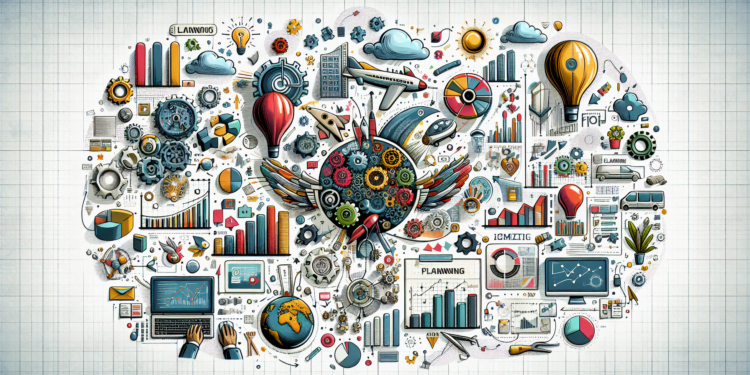Planning is a complex domain that involves the derivation of strategies or sequences of actions to achieve specific goals. Artificial intelligence (AI), which emulates human cognitive processes to solve problems, has significantly evolved in its ability to plan effectively across various fields, from logistics to robotics.
Theoretical Foundations of Planning in AI
Rooted in the fundamentals of decision theory and computer science, planning in AI has been inherently linked to machine intelligence since the inception of Dijkstra’s search heuristic in 1956 and the A* algorithm in 1968. These methodologies still participate in AI decision-making processes through the exploration and evaluation of nodes in a state space, weighing costs and benefits.
The development of constraint satisfaction techniques has enabled AI algorithms to identify feasible paths within complex parameterizations. Algorithms such as CSP (Constraint Satisfaction Problem) and SAT (Boolean satisfiability problem) are quintessential examples in AI literature that continue to inform contemporary practices.
Recent Advances in Planning Algorithms
The introduction of deep learning and neural networks has propelled the ability of AI systems to handle more abstract and general planning tasks. Recurrent neural networks (RNNs) and short-term memory networks (LSTMs) are being implemented to generate more accurate forecasts and manage complex temporal sequences.
The emerging field of multi-agent systems reveals a horizon in collective planning, where autonomous entities collaborate and/or compete to achieve common goals. These systems are especially promising in applications requiring distributed planning and real-time adaptability, and they are based on game theory and automatic negotiation.
Emerging Practical Applications
The confluence of classic AI theory and contemporary technological advances has resulted in a proliferation of transformative practical applications, as in autonomous robotics. Research on motion planning in robots (for example, PRM – Probabilistic Roadmaps) facilitates navigation in dynamic and complex environments.
In the field of healthcare, AI-assisted planning for personalized treatments and diagnoses is beginning to move from theory to practice. Algorithms based on reinforcement learning adapt therapeutic regimes to individual patient responses, while resource planning in hospitals optimizes schedules and staff allocation using genetic algorithms.
Case Studies: Application in the Real World
An exemplifying case study is found in the logistics of distributing COVID-19 vaccines, where planning algorithms optimized routes, timing, and resources. In this context, an integrated AI system took on the multidimensional task of distributing doses efficiently, taking into account the expiration of vaccines, geography, and population demand.
Similarly, we find prominent use of advanced planning techniques in space exploration. NASA’s Curiosity space probe, equipped with an autonomous AI system, performs geological analysis on Mars, planning its movements and research activities with precision and adapting to the uncertainties of the Martian environment.
Projection into Future Innovations
Looking ahead, we anticipate further development in the implementation of semi-supervised planning, where AI collaborates with humans to refine and optimize strategies, an approach that promises to improve acceptance and efficiency in critical sectors.
The next frontier in AI planning focuses on augmented cognition, integrating systems that not only plan but also understand and predict the emotional and psychological repercussions of their actions on humans. Here, the role of affective neural networks and human-robot interaction indicates a dawn on the technological horizon, where AI planning will be as intuitive and empathetic as it is strategic.
Artificial intelligence in planning continues to evolve, from solid theoretical underpinnings to the exploration of advanced and emerging applications. As technologies and algorithms are refined, AI’s ability to plan and execute tasks of incredible complexity will not only reach new heights but, in essence, will redefine the parameters of the possible in countless domains of human life.






















